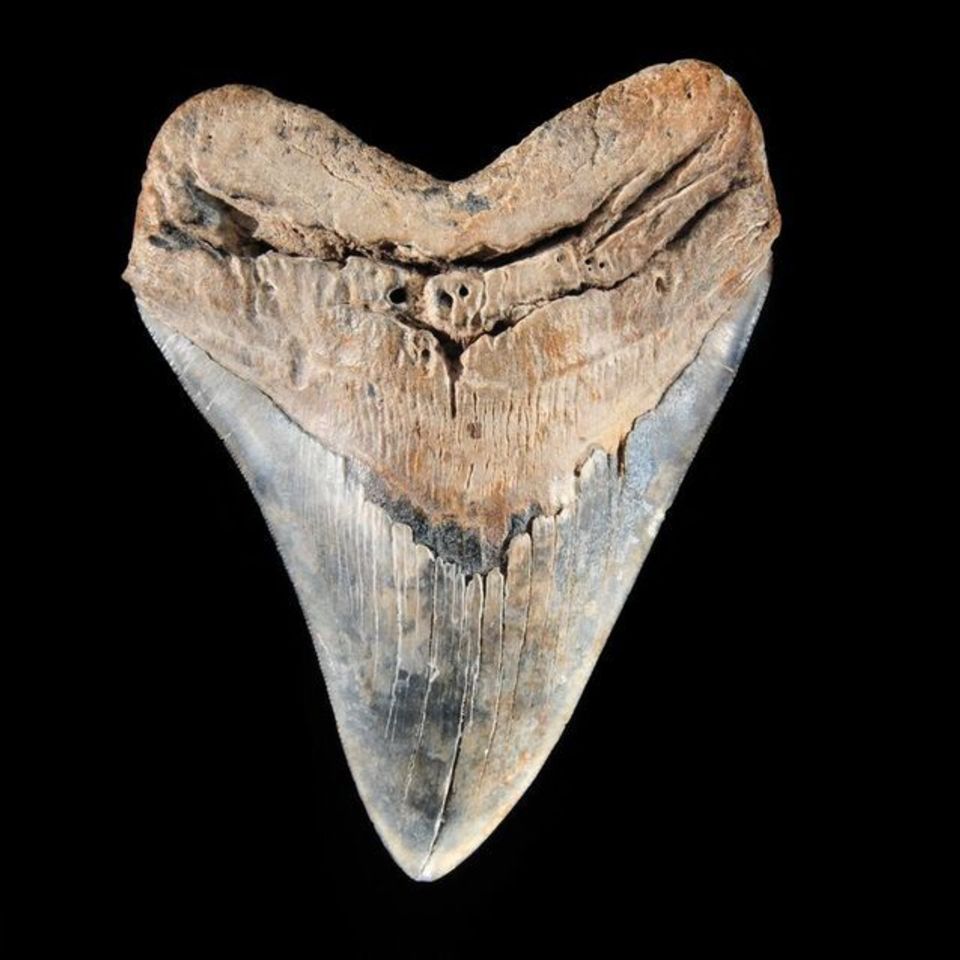
Megalodon, the colossal prehistoric shark, ruled the oceans millions of years ago during the Miocene and Pliocene epochs. With estimates suggesting that it lived roughly 23 to 3.6 million years ago, Megalodon was one of the largest predators to ever inhabit Earth’s seas. Among its most awe-inspiring features were its gigantic teeth, which have captivated scientists, paleontologists, and enthusiasts alike.
The name “Megalodon” translates to “big tooth,” and rightfully so, as the species is primarily known through its fossilized teeth. These teeth are among the largest of any shark species, reaching lengths of up to 7 inches (18 centimeters) or more. These formidable dental structures are characterized by their size, serrations, and unique shapes, contributing to the shark’s status as an apex predator of its time.
One of the most remarkable aspects of Megalodon teeth is their sheer size. These fossils dwarf the teeth of contemporary sharks, including the formidable great white shark. The largest known Megalodon teeth are often over six inches in length, showcasing the immense scale of the prehistoric predator. These teeth were well adapted for capturing and devouring large prey, allowing Megalodon to dominate the ancient oceans.
The serrations along the edges of Megalodon teeth are another fascinating feature. These serrations served a dual purpose, facilitating both the cutting of flesh and gripping onto slippery prey. The finely serrated edges allowed Megalodon to efficiently slice through the tough skin and blubber of marine mammals, such as whales and seals, which are believed to have constituted a significant portion of its diet.
The unique shapes of Megalodon teeth provide insights into the shark’s feeding habits. The teeth had a conical shape with a pronounced curve, resembling those of modern great white sharks but on a much grander scale. This design suggests that Megalodon was a versatile predator, capable of ambushing and disabling its prey with precision. The larger teeth were likely positioned towards the front of the jaw, ensuring that the shark could take down sizable prey with ease.
The fossilized teeth are not only impressive for their size and structure but also for what they reveal about Megalodon’s life cycle. Megalodon teeth are continually shed throughout the shark’s life, and they can be found in various sizes, indicating the existence of different age groups. By studying the growth patterns and wear on these teeth, scientists have been able to estimate the size, age, and growth rates of Megalodon individuals.
Despite the fascination surrounding Megalodon teeth, much about the shark remains shrouded in mystery. The scarcity of complete Megalodon skeletons has made it challenging to determine aspects of its biology, behavior, and evolutionary history. The teeth, however, serve as invaluable artifacts that offer glimpses into the past, allowing researchers to piece together the puzzle of Megalodon’s existence.
The extinction of Megalodon around 3.6 million years ago has spurred numerous theories, ranging from shifts in climate and prey availability to competition with other marine predators. While the gigantic shark no longer patrols the oceans, its legacy endures through the awe-inspiring fossilized teeth that continue to captivate the imagination of those intrigued by the mysteries of Earth’s ancient seas. The Megalodon’s amazing teeth, with their size, serrations, and unique shapes, stand as both artifacts of a bygone era and enduring symbols of one of the most formidable predators in the history of our planet.



